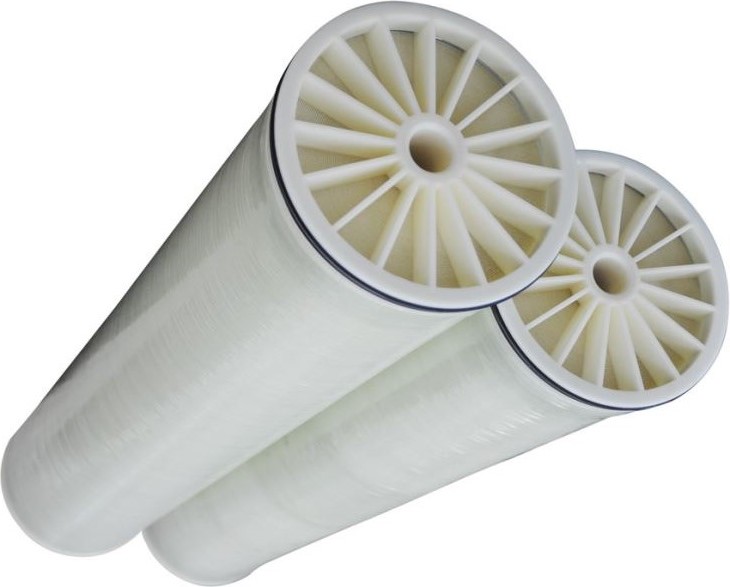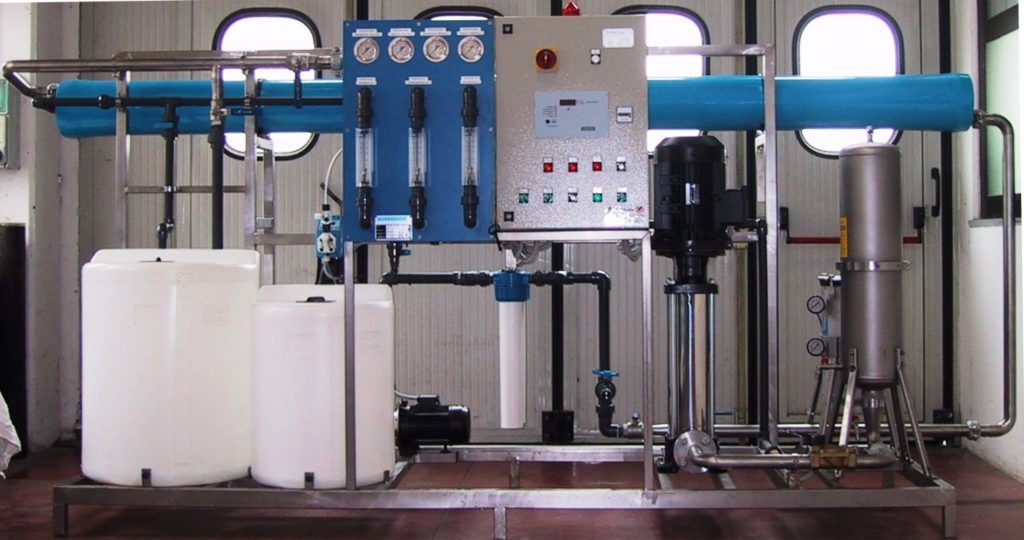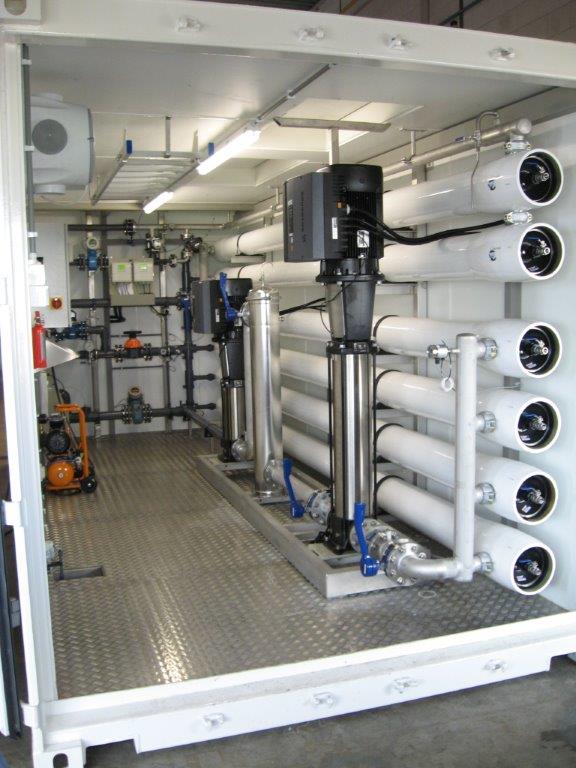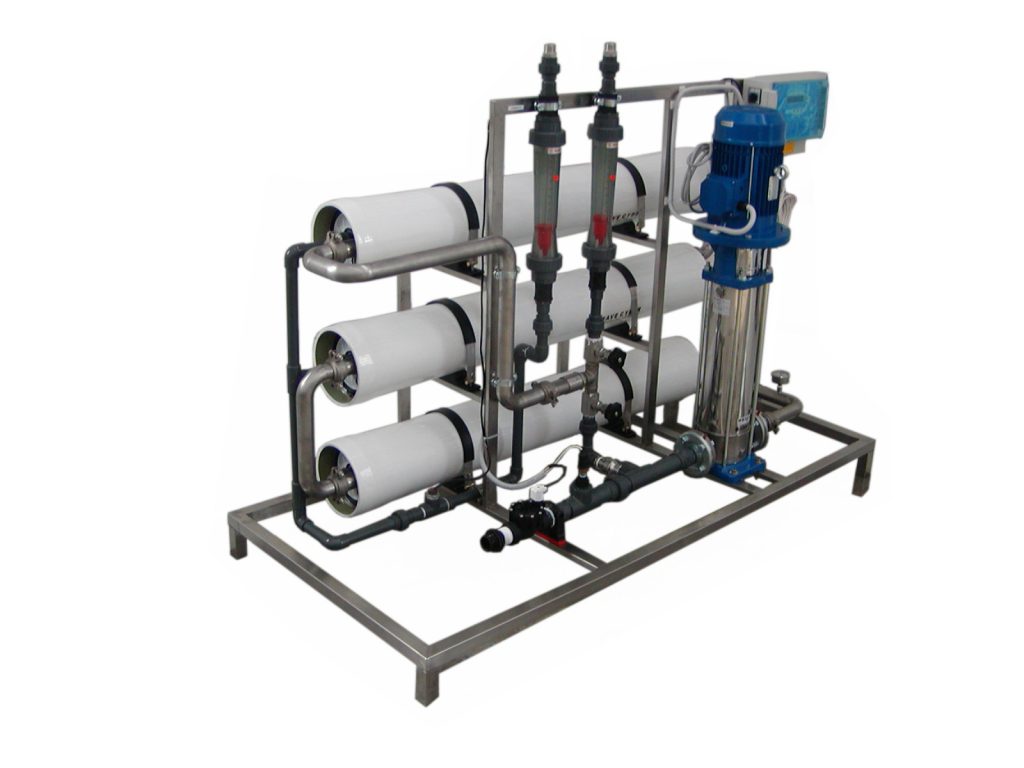Various methods can be used to produce demineralized water, the industrial system of demineralized water production is with the use of ion exchange resin plants or membrane reverse osmosis plants.
The first type of plant has a complete adaptation on many substances present in the water, and is a consolidated system for water recycling.
The second reverse osmosis system finds many applications and uses in the treatment of primary waters, while its use in industrial recycling processes must be evaluated.
The main advantages and disadvantages of an ion exchange resin demineralization system compared to a reverse osmosis system are:
Disadvantages:
- Use of acid and alkaline chemical reagents for resin regeneration.
- Management of regeneration eluates
Advantages:
- The recycled or produced water is of high quality with conductivity not exceeding 3 – 5 microsiemens
- Much lower energy consumption
- Much lower water consumption, the water is completely demineralized without losses
The main advantages and disadvantages of a reverse osmosis system compared to an ion exchange resin demineralization system are:
Disadvantages:
- Lower water quality produced
- High water consumption 30 % – 40 % of the volume used is discharged or lost
- High energy consumption
Advantages:
- Chemical reagents are not necessary (in some cases the use of scale inhibitors and anti-precipitants is necessary).
- No regeneration eluates are produced
- Bacterial disinfection of treated water
The choice whether to use a resin plant or a reverse osmosis plant for the production of demineralized water is given by the type of water to be treated at the inlet if primary or secondary, and by its final use.




